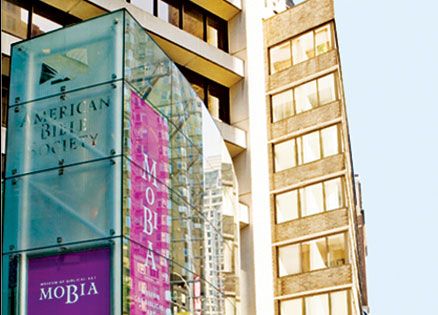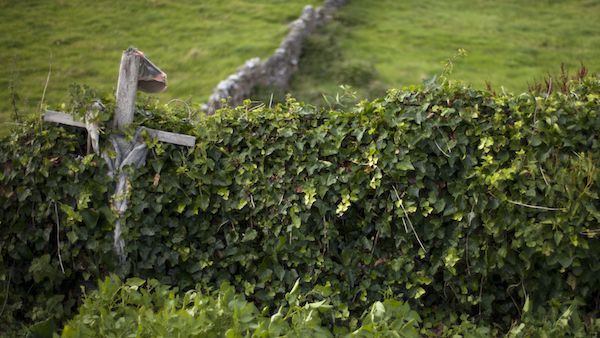I carry a battered old copy of the King James Bible that I turn to every morning on my subway ride to work. Those phrases with their magnificent cadences, “The Lord is my shepherd; I shall not want…” “Our father, which art in heaven,” have supported me and millions of other believers on our journeys. But were it not for a disgruntled king and the work of a small group of scholars, we wouldn’t be celebrating the four hundredth anniversary of the greatest book in the English language.
Recently I visited a remarkable museum on the second floor of the American Bible Society in New York to find out how this groundbreaking translation came to be. From July 8 through October 16, the Museum of Biblical Art is putting on an exhibit celebrating the King James Bible’s four hundredth birthday. My guide was the curator, an enchanting white-haired classics scholar named Dr. Liana Lupas. Together we looked at the various copies of the King James Version on display.
There was the Aitken Bible, the first KJV to be printed in America and the only Bible ever recommended by Congress. “It was printed in 1782,” my guide said, “and as you can see, the name of any king is conspicuously absent.”
Because I’m an editor she thought I’d appreciate another copy of the KJV, one the meticulous English publisher Isaac Collins printed. “There are almost no typos in it, because he offered his children a dollar for every mistake they could find.” Then there was the leather-bound Bible with a rusty chain attached to it.
“The English king demanded that every church have a Bible available for all to read,” she said. Apparently this one needed to be secured so no one could walk away with it.
No doubt about it, Scriptures printed in language easy enough to be understood by “a boy that driveth the plough,” as the early English translator Tyndale put it, was invaluable. But what motivated King James I to request a new version?
The clue was under glass and in very small print. When King James assembled all the leaders of the Church of England at Hampton Court in 1604 to take on the task, he was ruling over a country that was becoming increasingly divided between Puritans and conformists. There were several English Bibles and one in particular got his goat, the Geneva Bible, a translation published in 1560 by Protestant exiles.
“It wasn’t the text that bothered him as much as the notes printed in the margin,” Dr. Lupas told me.
There in the first book of Exodus the text describes how the Hebrew midwives disobeyed the Egyptian king. Next to verse 19, in the smallest type, an editor noted: “Their disobedience herein was lawful.” The comment was simply unacceptable to King James I. He felt the country needed a translation with no commentary or interpretation, a Bible that would get all his subjects on the same page.
The result was the most significant literary achievement ever accomplished by committee. The KJV was the Bible that ultimately all Englishmen and women read and eventually the one we Americans came to know. Because of its popularity Abraham Lincoln could say, “A house divided against itself cannot stand,” and all his listeners would understand the biblical reference.
It has provided so many phrases in the English language, like “fatted calf” and “pearls before swine,” we forget they came from Scripture. And it continues to give people like me, typing on a laptop rather than driving a plough, comfort and solace.
I thanked the curator and got back on the subway. I took my Bible out of my bag and read: “Surely goodness and mercy shall follow me all the days of my life and I will dwell in the house of the Lord forever.” The words felt as fresh as the day they were printed 400 years ago.
Download your FREE ebook, A Prayer for Every Need, by Dr. Norman Vincent Peale






